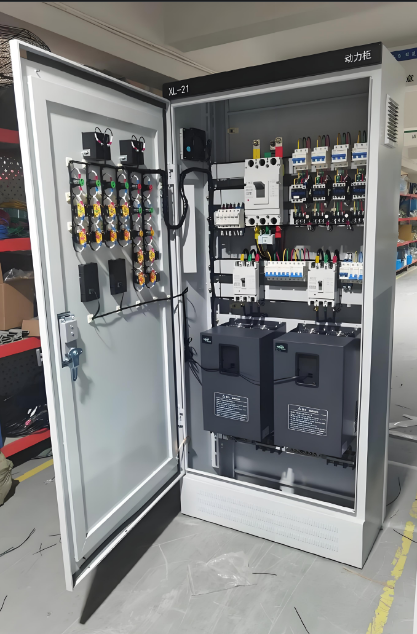
Maintenance Methods and Precautions for Soft Starter Cabinets
Soft starter cabinets are widely used in modern industrial applications to reduce the inrush current during motor startup, thereby protecting motors and related equipment. Proper soft starter cabinet maintenance not only extends the lifespan of the equipment but also improves operational reliability. This article provides detailed methods for maintaining soft starter cabinets and essential precautions, helping you understand how to maintain soft starter cabinets effectively.
I. Basic Maintenance Steps for Soft Starter Cabinets
- Regular Cleaning
- Inspect the exterior and interior of the soft starter cabinet, removing dust, oil, and other debris to keep the equipment clean.
- Use compressed air to clean the heat sinks, fans, and circuit boards, ensuring proper ventilation and an efficient soft starter cabinet cooling system.
- Avoid using wet cloths to wipe electronic components directly.
- Check the Firmness of Connections
- Regularly inspect the terminals of the main circuit and control circuit for any looseness.
- Replace or tighten any aging or loose connections promptly to prevent faults caused by poor contact.
- Inspect Electrical Components
- Test contactors, relays, and circuit breakers to ensure they operate correctly, as they are often associated with common soft starter cabinet faults.
- Test the fuses in the control circuit to ensure they can properly protect the equipment under overload or short-circuit conditions.
- Cooling System Maintenance
- Check the condition of the fans and heat sinks regularly to ensure efficient cooling for the soft starter cabinet cooling system.
- Clean or replace blocked heat sinks or faulty fans promptly.
- Inspect the Soft Starter Module
- Observe the surface of the module for burn marks, cracks, or other abnormalities.
- Use instruments to measure module parameters, such as trigger voltage and operating current, ensuring they are within normal ranges.
- Check Software and Parameter Settings
- If the soft starter cabinet is equipped with programmable controllers, ensure the software is updated regularly.
- Adjust startup time, current limit, and other parameters based on operational needs to optimize performance.
-

Soft Starter Cabinets
II. Precautions for Maintaining Soft Starter Cabinets
- Operate with Power Off
Always power off the cabinet completely before performing any soft starter cabinet maintenance to ensure safety. - Prevent Moisture and Dust
- Keep the environment clean and dry to avoid faults caused by moisture or dust.
- Use dehumidifiers or desiccants in humid areas to prevent common soft starter cabinet faults.
- Avoid Overloading
- Check motor loads regularly and avoid prolonged overloading that can damage the soft starter cabinet.
- Ensure the cooling system is functioning properly; install additional cooling devices if necessary.
- Perform Regular Testing
- Conduct quarterly or semi-annual tests on the soft starter cabinet, including input/output voltage, current waveforms, and other parameters.
- Ensure the startup and stop parameters match the motor’s requirements.
- Recordkeeping and Documentation
- Record inspection results, maintenance activities, and replaced components after each service.
- Maintain a complete equipment archive for future reference and troubleshooting.
III. Common Faults and Solutions for Soft Starter Cabinets
- Startup Failure
- Check if the control signals are transmitted correctly.
- Test the startup module and replace it if necessary.
- Overheating Alarm
- Inspect the fans and heat sinks to ensure proper operation and ventilation.
- Check for excessive loads causing overheating.
- Tripping During Operation
- Check if overloads are causing the trip and adjust the load or current limit parameters.
- Inspect circuit breakers and fuses, replacing faulty ones promptly.
- Motor Operation Abnormalities
- Ensure motor parameters match the settings of the soft starter cabinet.
- Verify the stability of output voltage and current.
IV. SEO Keywords for Soft Starter Cabinet Maintenance
To improve the visibility of this article in search engines, the following SEO keywords have been strategically included:
- Soft starter cabinet
- Soft starter cabinet maintenance
- Maintenance methods for soft starter cabinets
- Common soft starter cabinet faults
- Soft starter cabinet cooling system
- How to maintain soft starter cabinets
- Industrial soft starter cabinet maintenance
- Soft starter cabinet parameter settings
Through regular maintenance and proper management, soft starter cabinets can maintain optimal performance, prevent unnecessary failures or downtime, and enhance production efficiency. We hope this article provides valuable insights for you!
